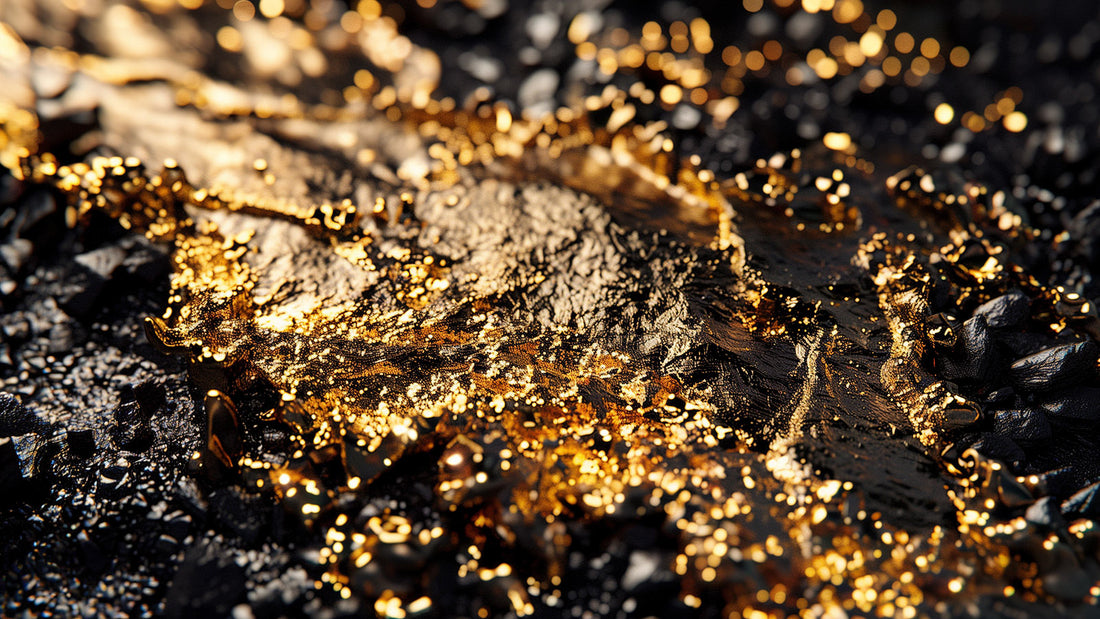
What is Recycled Gold?
Share
In the world of fine jewelry, gold reigns supreme, symbolizing beauty, elegance, and enduring value. Gold has a special place in our hearts. Yet, the traditional methods of gold mining exact a heavy toll on the environment, from habitat destruction to pollution. Enter recycled gold—a shining beacon of sustainability and ethical sourcing. But what exactly is recycled gold (also called “scrap“), and why is it the benchmark for environmentally conscious jewelry buyers?
Recycled gold is a testament to the circular economy, embodying the principle of rebirth and renewal. Unlike other commodities, gold has very little true consumption; the majority of mined gold remains above ground in various forms, ready to return to the market. Old jewelry accounts for over 90% of total scrap gold, with emerging markets like India and China contributing significantly to this supply. Old scrap accounted for a substantial 28% of the total gold supply in the period 2010-21 (Source: www.lbma.org).
Recycled gold undergoes a meticulous process of melting, refining, and casting, transforming it into new pieces of jewelry without compromising its integrity. This infinite recyclability makes recycled gold the ideal choice for the environmentally conscious jewelry buyer.
Is Recycled Gold Good Quality?
The quality of recycled gold is equal to that of freshly mined gold - minus any negative environmental issues. But whether it's extracted from the earth or sourced from recycled materials, pure gold maintains its chemical composition and physical properties.
18K gold is significantly more expensive than 14K and 10K gold because it has such high purity. More fine jewelry brands are opting for 18K recycled gold instead of newly mined, appreciating its high quality. Because it has such high purity, a nice benefit is that there's less risk causing skin irritations or allergic reactions.
The Recycling Process
The journey of recycled gold begins with the evaluation of its quality using acid kits or spectrometers. Recyclers carefully sort the gold by quality before subjecting it to intense heat in a crucible, melting away impurities. The molten gold is then poured into a bar shape and smelted once more to ensure purity. This meticulous process ensures that recycled gold meets the highest standards of quality and sustainability.
The melting point of gold occurs at a remarkably high temperature of approximately 1,948 degrees Fahrenheit (1,064 degrees Celsius). To put it in context, this temperature is over ten times hotter than the boiling point of water (100 degrees Celsius or 212 degrees Fahrenheit).
Infinite Recyclability
One of the most remarkable features of gold is its infinite recyclability. Unlike other materials that degrade over time, gold can be melted down and reshaped millions of times without losing its integrity. At Hillary Alexandria, we are proud to use 100% recycled gold in our jewelry, reducing our environmental footprint and preserving precious resources for future generations.
Choosing recycled gold is not just a matter of aesthetics—it's a statement of values. Recycled gold offers a tangible way to support sustainable practices while indulging in the timeless elegance of fine jewelry. As the demand for ethical and environmentally friendly products continues to grow, recycled gold emerges as the gold standard for conscious consumers.
Join the Movement
At Hillary Alexandria we strive to redefine luxury through sustainability, we invite you to join us on this journey of conscious consumption. Explore our collection of recycled gold earrings and necklaces, each designed with passion and purpose by our founder Hillary Alexandria Smith. When buying jewelry, you can make an ethical choice. Together, let's embrace the beauty of recycled gold and pave the way for conscious luxury and a more sustainable future.
Have you ever brought your old and unused gold to a goldsmith or refinery to sell it or produce something new? Comment below.
